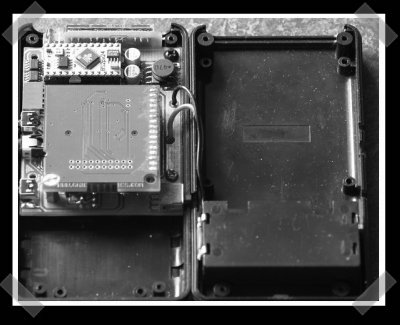
[Marcus] sent in his rather interesting g-force logger. He’s posted most of the bits, but hasn’t quite released all the info you’d need to build your own. The most interesting part is the video camera time sync. He used a SD development board for the data logging along with an accelerometer to produce the data. The latest version features selectable internal and external sensors and decent size reduction. I’d like to see something like this combined with a high sensitivity GPS sensor to record skydiving or hangliding.
8 thoughts on “G-force Logger W/video Sync”
Leave a Reply
Please be kind and respectful to help make the comments section excellent. (Comment Policy)















i’ve always wanted to slip one of these into my luggage before an airplane trip, just to see how much abuse my suitcase gets. once i bought a $300 samsonite suitcase, the next week i took my first trip with it and they’d managed to destroy two of the zippers and wrench off one wheel bracket. it was only an 800 mile trip, and i happen to know my suitcase was the only one on the plane, and it took 1.5 hours to get from the plane to baggage claim…never fly delta into atlanta (which is the same as saying “never fly delta”).
@garrett:
I assume it will continue recording while the airline says “Hey, Xray, FTW!” (translated into ‘wtf is that thing? must be a bomb. lets roll out bomb squad and blow it up, all while delaying the plane for 3 hours.’)
garrett –
http://www.shockwatch.com/shipping_handling_monitors/impact_indicator/index.php
Attaching a g-force logger to a skydiver would yield pretty boring results..it would increase for a while (ascending in a plane), then decrease to 0 and stay there for a few minutes ;)
We played around with these in high school physics at an amusement park with various rides/coaster. Much more exciting results (we didn’t have 3d sensors, but just the same..)
As was said above, attaching to luggage would be pretty exciting too.
Darn…beaten to post. Been working on something like this myself. The ironic thing he’s using the same housing and done a nicer job of it (I like the alpha display at the front!).
My design has a PIC18F4550 with an ADXL330 (as using in the wiiremote). Note the QFN package of the ADXL330 was soldered direct to the board….no daughter boards except for the display (an uLCD Mk1..128×128 colour unit from 4d systems).
The video below:
http://www.youtube.com/watch?v=L9menwHgiyM
shows me shaking it in three dimensions and switching between the three ADXL330 channels to show the results. X is up/down, Y is left/right, Z is back/forth.
Still to do is to add 64kb flash ram (chips only, no SD), USB i/f and a LiOn charger based on the MCP73863 chip charging off USB. Hope to use a phone battery under the board instead of the AAA cells.
Phil
If it is a true g-force meter, instead of an accelerometer, it should display the g-force increasing as you sky-dive.
I don’t know if it is a particular change in the construction of rebar-reinforced concrete floor buildings, but the two sites I’ve been at lend to a rather unpleasant feeling whenever anyone walks by. The person in the cubicle next to mine is approximately twice my volume which makes that person something on the order of 340 pounds (English); this person gets up and walks around nearly every five minutes; never longer than a “rest” of fifteen minutes. It has gone far from being merely a distraction from doing my work to being a genuine pain in the… well, I reckon you can guess. I’ve recently bought a 3-axis accelerometer which I’ll hook up to something in my pile of stuff and start recording Real Soon Now. If I could get it -truly- calibrated, I think I’d take the data to the building engineer; it would be fun/useful if it was synchronized with a video camera to show who is creating the greatest bouncing. At the very least, perhaps I can move to a different cubicle (very weak grin).
the most interesting part of the skydive to measure wouldn’t be the freefall, which would be a very short period of zero g after exiting the plane until terminal velocity is reached (after about 5 seconds). It would be the opening force of the parachute, and the parachute landing itself. If you think a parachute ride is boring search online for “pd factory team” to see for yourself.